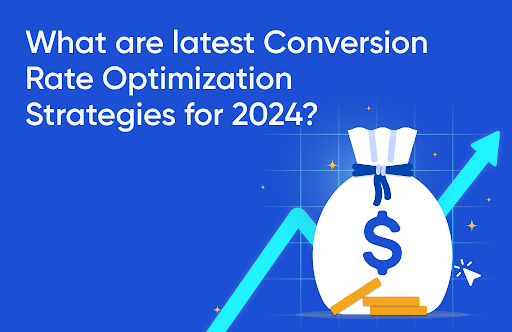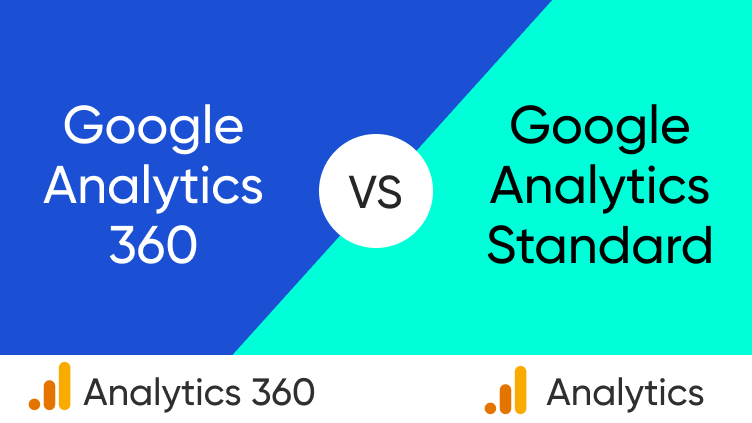Introduction
In 2024, understanding user behavior and optimizing digital strategies is more critical than ever for business success.Google Analytics 4 (GA4) offers businesses an advanced and adaptable platform for web analytics, enhancing the depth and flexibility of data insights. According to Statista, 90% of global businesses consider data analytics essential for digital transformation.
This guide will walk you through everything you need to know about GA4, from setup to advanced analysis techniques, ensuring you can leverage its full potential for your business. Let’s dive in and learn how to transform your digital strategy with GA4!
What is GA4?
Google Analytics 4 is the latest evolution of Google Analytics, designed to track the customer journey comprehensively and facilitate data-driven decisions with a privacy-centric approach. It offers robust tools for identifying bottlenecks in the customer journey and utilizes machine learning to provide predictive insights, helping businesses anticipate customer actions and trends based on historical data. This version is tailored for an evolving digital ecosystem, with machine learning as a core component, enhancing the analytical capabilities for users.
Importance of GA4 for Businesses
In the digital age, understanding user behavior is crucial for business success. GA4 provides businesses with powerful tools to monitor and analyze user interactions, facilitating informed decision-making based on detailed data. With features like cross-device tracking, enhanced measurement, and predictive analytics, GA4 enables businesses to optimize their marketing strategies, improve user experiences, and drive growth.
1. Setting Up Google Analytics 4
Creating a GA4 Property: The first step in learning GA4 is creating a new property in your Google Analytics account. Navigate to the Admin panel and select “Create Property.” Provide basic information about your website or app and configure the data streams you want to track. GA4 allows you to track data from multiple sources, such as websites, mobile apps, and even offline interactions, in a single property.

Installing GA4 Tracking Code: Understanding how to install the GA4 tracking code is crucial. After creating your property, the next step is to install the GA4 tracking code on your website or app. This code snippet collects data and sends it to your GA4 property. For websites, add the tracking code directly to your site’s HTML or use a tag management solution like Google Tag Manager. For mobile apps, integrate the GA4 SDK into your app’s codebase.
Setting Up Data Streams: Data streams in GA4 are the sources of data that feed into your property. You can set up data streams for websites, Android apps, and iOS apps. Each data stream has its own unique measurement ID, ensuring that data is accurately collected and attributed. Configuring data streams correctly is essential for accurate reporting and analysis in GA4.

2. Understanding the GA4 Interface
Navigation Overview: The GA4 interface is designed to be user-friendly and intuitive, with a focus on providing quick access to key insights. The main navigation menu on the left side of the screen includes options for Home, Reports, Explore, Advertising, Configure, and Library. Each section offers different tools and reports to help you understand your data.
Key Sections and Their Functions:
- Home: Provides an overview of your key metrics and recent trends.
- Reports: Contains detailed reports on user acquisition, engagement, monetization, and retention.
- Explore: Offers advanced analysis tools for deeper insights, such as custom reports and segment analysis.
- Advertising: Focuses on the performance of your advertising campaigns.
3. Data Collection and Configuration
Event-Based Data Model: GA4 introduces an event-centric data model, offering a more granular approach compared to the traditional session-based model of Universal Analytics. Instead of tracking user sessions, GA4 focuses on individual user interactions (events) such as page views, clicks, and transactions. This model provides a more detailed and flexible approach to understanding user behavior.
Custom Events and Parameters: Custom events allow you to track specific user interactions that are important to your business. To create custom events, define the event name and parameters that capture relevant details. For example, an e-commerce site might track events like ‘product_view’ or ‘add_to_cart’ with parameters such as product ID, category, and value.
In GA4, parameters add context to events. There are two types of parameters: event parameters and user properties. Event parameters provide additional information about the specific event, while user properties are attributes assigned to users that persist across sessions. These can be configured in the GA4 interface under the “Configure” section or via the GA4 SDK for mobile apps.
Enhanced Measurement Features: Enhanced measurement features in GA4 simplify the process of tracking common interactions without requiring additional coding. These features can be enabled in the data stream settings and include:
- Page views: Tracks each page load or page change event.
- Scrolls: Captures when users scroll 90% of the page.
- Outbound clicks: Tracks clicks on links that lead to external domains.
- Site search: Captures search terms entered by users on your website.
- Video engagement: Tracks video starts, progress, and completions.
- File downloads: Monitors click on downloadable file links.

4. Exploring GA4 Reports
Real-Time Report: GA4’s Real-Time report delivers live insights into user activities on your site or app, crucial for monitoring real-time engagement and performance. This report is essential for monitoring the immediate impact of campaigns or identifying any issues with data collection. It shows active users, the pages they are viewing, events being triggered, and the geographic locations of your visitors.
Life Cycle Reports: Life Cycle reports in GA4 offer insights into the user journey from acquisition to retention. These reports are divided into four key areas:
- Acquisition: Understand where your users come from, including traffic sources, mediums, and campaigns. GA4 provides detailed insights into user acquisition by combining data from all data streams.
- Engagement: Track user interactions with your content. Metrics like engaged sessions, average engagement time, and events per session help you gauge user interest and activity.
- Monetization: Analyze revenue-related metrics if you run an e-commerce site or monetize your content through ads. This includes tracking in-app purchases, ad revenue, and subscription renewals.
- Retention: Measure how well you retain users over time. Retention analysis helps identify trends in user loyalty and the effectiveness of your retention strategies.

5. User-Centric Measurement
User ID Tracking: GA4 emphasizes user-centric measurement, tracking individual behaviors across sessions and devices to provide a comprehensive view of user interactions. User ID tracking assigns a unique identifier to each user, allowing for more accurate cross-device tracking and user journey analysis. Implementing User ID tracking requires modifying your GA4 tracking code to send a unique ID for logged-in users.
Google Signals: Google Signals enhances GA4’s user-centric measurement by enabling cross-device tracking and remarketing capabilities. When enabled, Google Signals collects data from users who have opted into ad personalization, providing more comprehensive insights into cross-device behavior.
Cross-Device Tracking: Cross-device tracking in GA4 allows you to understand how users interact with your business across multiple devices. By combining data from User ID and Google Signals, GA4 provides a holistic view of the user journey, helping you identify patterns and optimize the user experience.
6. Advanced Analysis Techniques
Explorations: Explorations in GA4 offer powerful tools for in-depth data analysis. These tools allow you to create custom reports and perform detailed analyses to uncover insights specific to your business needs. Key types of explorations include Free-form, Funnel, Path, and Segment Overlap.
Funnel Analysis: Funnel analysis in GA4 helps you visualize and analyze the steps users take toward a conversion. By identifying drop-off points in the funnel, you can optimize the user journey to improve conversion rates.
Path Analysis: Path analysis allows you to visualize the sequence of events users trigger on your site or app. This helps you understand common user journeys and identify potential areas of friction or opportunities for optimization.

7. Conversion Tracking in GA4
Setting Up Conversions: Conversion tracking in GA4 is essential for measuring the success of your marketing efforts and understanding how users achieve key objectives on your site or app. To set up conversions, you need to mark specific events as conversions.
Analyzing Conversion Paths: Analyzing conversion paths helps you understand the user journey leading to conversions. This analysis provides insights into the effectiveness of your marketing channels and user interactions.
Attribution Models: Attribution models in GA4 help you determine how credit for conversions is assigned to different touchpoints in the user journey. GA4 offers several attribution models, including last-click, first-click, linear, time decay, and data-driven attribution.
8. Audiences and Segmentation
Creating Audiences: Audiences in GA4 allow you to group users based on specific criteria and analyze their behavior. These audiences can also be used for remarketing and personalized marketing campaigns.
Custom Segments: Custom segments in GA4 enable you to isolate specific groups of users for more detailed analysis. Segments can be based on user properties, events, and other criteria.
Audience Triggers: Audience triggers in GA4 allow you to activate specific actions when users enter or exit an audience. This feature is useful for real-time personalization and automated marketing efforts.
9. Integrations and Linking
Google Ads Integration: Integrating Google Ads with GA4 allows you to track the performance of your ad campaigns and optimize your marketing efforts. This integration provides detailed insights into how your ads drive user engagement and conversions.
BigQuery Linking: Linking GA4 to BigQuery enables you to export raw data for advanced analysis. This integration is particularly useful for large-scale data analysis and custom reporting.
Data Import: GA4’s data import feature allows you to upload additional data to enhance your analytics. This includes importing offline data, user data, and product data to create a more comprehensive view of user interactions.


10. Privacy and Compliance
Data Privacy Features: GA4 includes several features to help you comply with data privacy regulations such as the General Data Protection Regulation (GDPR) and the California Consumer Privacy Act (CCPA).
GDPR and CCPA Compliance: Ensuring compliance with GDPR and CCPA is crucial for businesses operating in regions covered by these regulations. GA4 provides tools to help you manage user consent and data requests.
Consent Mode: Consent Mode in GA4 allows you to adjust data collection practices based on user consent preferences. This helps you balance data collection needs with user privacy requirements.
11. AI and Machine Learning in GA4
Predictive Metrics: GA4 leverages machine learning to provide predictive metrics, which help you anticipate user behavior and make data-driven decisions. These metrics include purchase probability, churn probability, and revenue prediction.
Anomaly Detection: Anomaly detection in GA4 uses machine learning to identify unusual patterns in your data. This feature helps you quickly spot and investigate irregularities, such as sudden drops in traffic or unexpected spikes in conversions.
Insights and Recommendations: GA4 provides automated insights and recommendations based on your data. These insights help you uncover trends, optimize performance, and identify growth opportunities.
12. Customizing GA4
Custom Dimensions and Metrics: Custom dimensions and metrics in GA4 allow you to capture additional data specific to your business needs. These customizations enhance your reporting and analysis capabilities by adding more context to your data.
User Properties: User properties are attributes you can assign to users to track additional details about them. These properties persist across sessions and help you segment your audience more effectively.
Custom Dashboards: Custom dashboards in GA4 allow you to create personalized views of your data tailored to your business needs. These dashboards provide quick access to key metrics and insights.

13. Reporting and Visualization
Creating Custom Reports: Custom reports in GA4 enable you to tailor your analytics to specific business questions. By defining the metrics and dimensions most relevant to your goals, you can create highly focused reports.
Using Data Studio with GA4: Google Data Studio is a powerful tool for visualizing GA4 data. By connecting GA4 to Data Studio, you can create interactive and visually appealing reports and dashboards.
Visualization Best Practices: Effective data visualization is crucial for communicating insights clearly and persuasively. Follow best practices to ensure your GA4 reports are easy to understand and actionable.
Conclusion
Google Analytics 4 represents a significant advancement in web analytics, offering businesses more detailed and flexible tools for understanding user behavior. By mastering GA4, you can unlock deeper insights, optimize your marketing strategies, and drive business growth. Whether you’re setting up your GA4 property, exploring advanced analysis techniques, or integrating with other tools, this guide provides the foundation you need to learn Google Analytics 4 and make the most of it in 2024.







